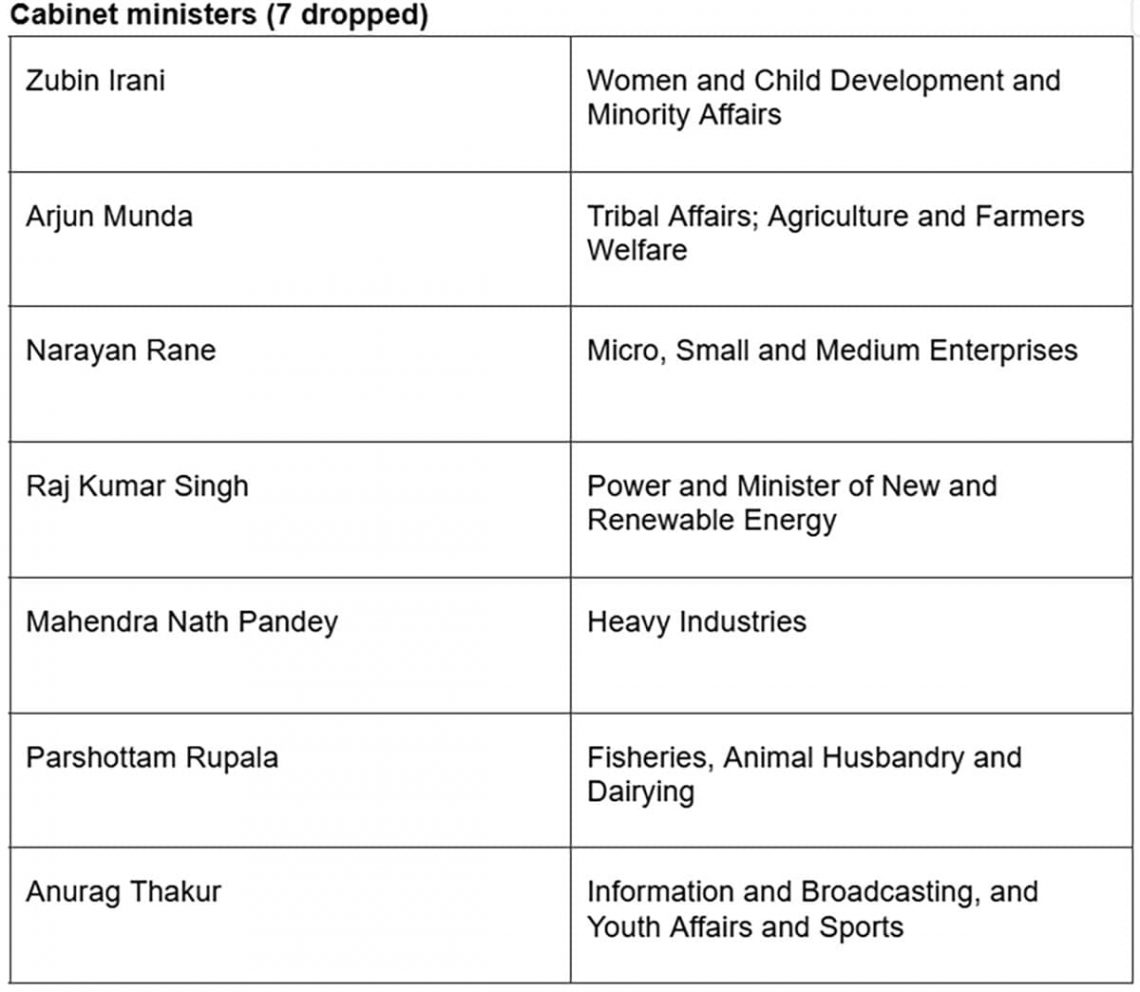Compared to 45 ministers in 2014 and 57 ministers in 2019, Prime Minister Narendra Modi inaugurated his third term with the largest fleet of ministers — 72. According to law, Modi can have a maximum of 81 ministers — capped at 15% of the strength of the 545-member (including the nominated members) Lok Sabha, the lower house of India’s Parliament.
Modi ended his previous term with 71 ministers — 26 of the Cabinet rank and 45 of the Minister of State rank (junior ministers), of which three had “Independent Charge” of their ministries.
Of the 26 Cabinet rank ministers, Modi dropped seven as he constituted his Council of Ministers for the third consecutive term — a feat that had been unmatched since India’s first prime minister, Jawaharlal Nehru, formed his government in 1962.
Modi retained 19 Cabinet rank ministers and inducted 11 new faces to make up his 30-member group of senior ministers.
A major takeaway from Modi’s third Council of Ministers is the entry of strong regional players as Cabinet rank ministers. Though Modi’s chief lieutenants — Rajnath Singh, Amit Shah, Jaishankar and Nirmala Sitharaman — hold the same prominence, the entry of regional stalwarts and several leaders from alliance partners may see a change in the order of precedence in the Council of Ministers.
Former chief ministers Shivraj Singh Chouhan, Manohar Lal Khattar (both from Modi’s Bharatiya Janata Party from Madhya Pradesh and Haryana respectively), HD Kumaraswamy (Janata Dal-Secular leader from Karnataka), and Jitan Ram Manjhi (Hindustani Awam Morcha leader from Bihar) paint a new picture of Modi’s cabinet.
Besides, Chirag Paswan (Lok Janshakti Party-Ram Vilas leader from Bihar), Rajiv Ranjan Singh (Janata Dal-United leader from Bihar) and Kinjarapu Naidu (Telugu Desam Party leader from Andhra Pradesh) are among the new faces holding the Cabinet rank in the National Democratic Alliance (NDA) government.
Modi has given five junior ministers independent charge to run their ministries — three of them have been retained from the previous NDA government. Two are new entrants.
Rao Inderjit Singh, Jitendra Singh and Arjun Meghwal (all BJP leaders) were retained while Shiv Sena (Shinde faction)’s Prataprao Jadhav and Rashtriya Lok Dal’s Jayant Singh Chaudhary were inducted afresh in the government.
The biggest change in the appearance of Modi 3.0 from how the Council of Ministers looked in Modi 2.0 has happened in the junior ministers — who are actually responsible for implementing the policies of the top leadership of the government and respective ministries — who will help their seniors.
Of the 42 MoS members in the previous Council of Ministers, Modi has dropped 30. He has completely overhauled the band of junior ministers in his third government.
The table below lists those who were not considered for running the third Modi government. About a dozen of them lost the recent parliamentary polls.
Those retained in Modi 3.0 include Ramdas Athawale, Shripad Naik, Krishan Pal, Nityanand Rai Pankaj Choudhary, Anupriya Singh Patel, SP Singh Baghel, Shobha Karandlaje, BL Verma Shantanu Thakur, and L Murugan, whose case is unique in the sense that he is one of the ministers who lost the polls. Murugan is being seen as the BJP’s outreach to voters in Tamil Nadu, from where the party couldn’t win a single of the 39 Lok Sabha seats.
The 25 new faces in the junior rank of Modi’s Council of Ministers tells a story of political considerations, compulsions and caste calculation. The new members in the MoS team are:
Modi’s third-term Council of Ministers finds representations from 24 states — including a first from Kerala in the form of Suresh Gopi. In terms of caste arithmetic, the ministry has 27 Other Backward Classes (OBC) members, 10 ministers from the Scheduled Castes (SC) community, five from the Scheduled Tribes (ST), and five from minority communities — none from the Muslim communities.
Link to article –
